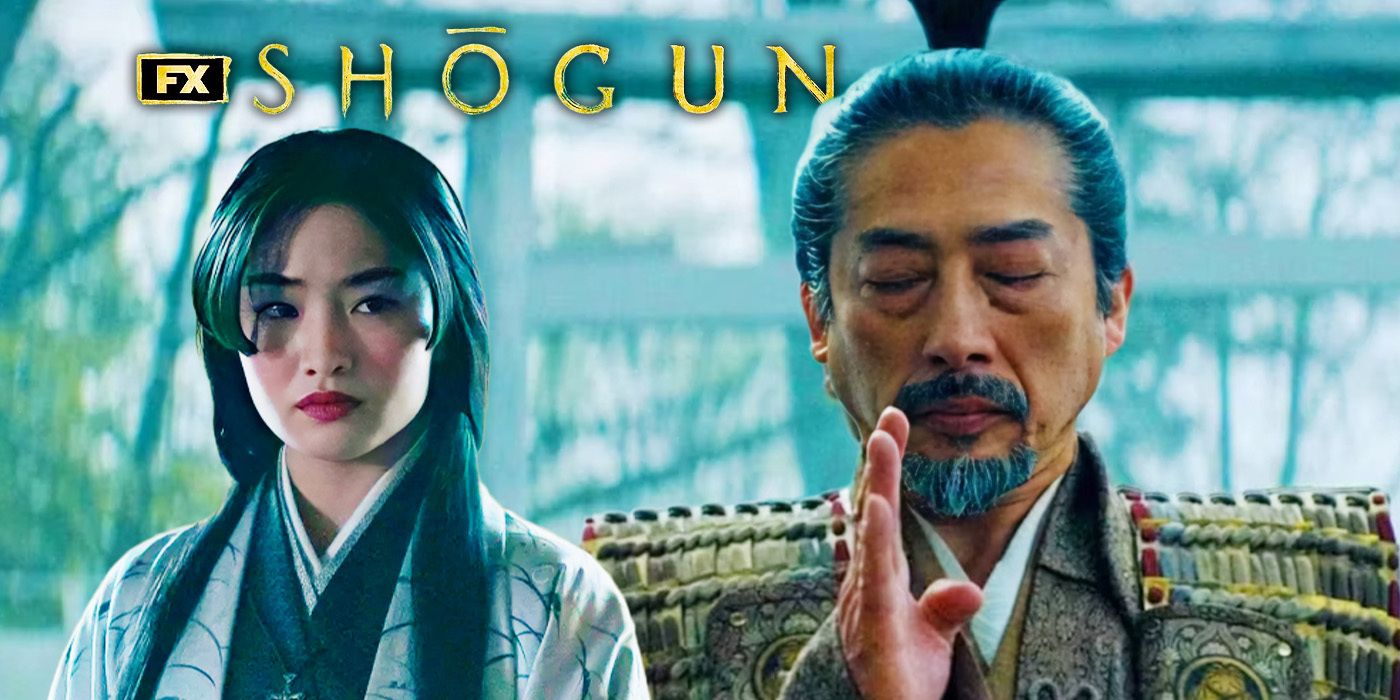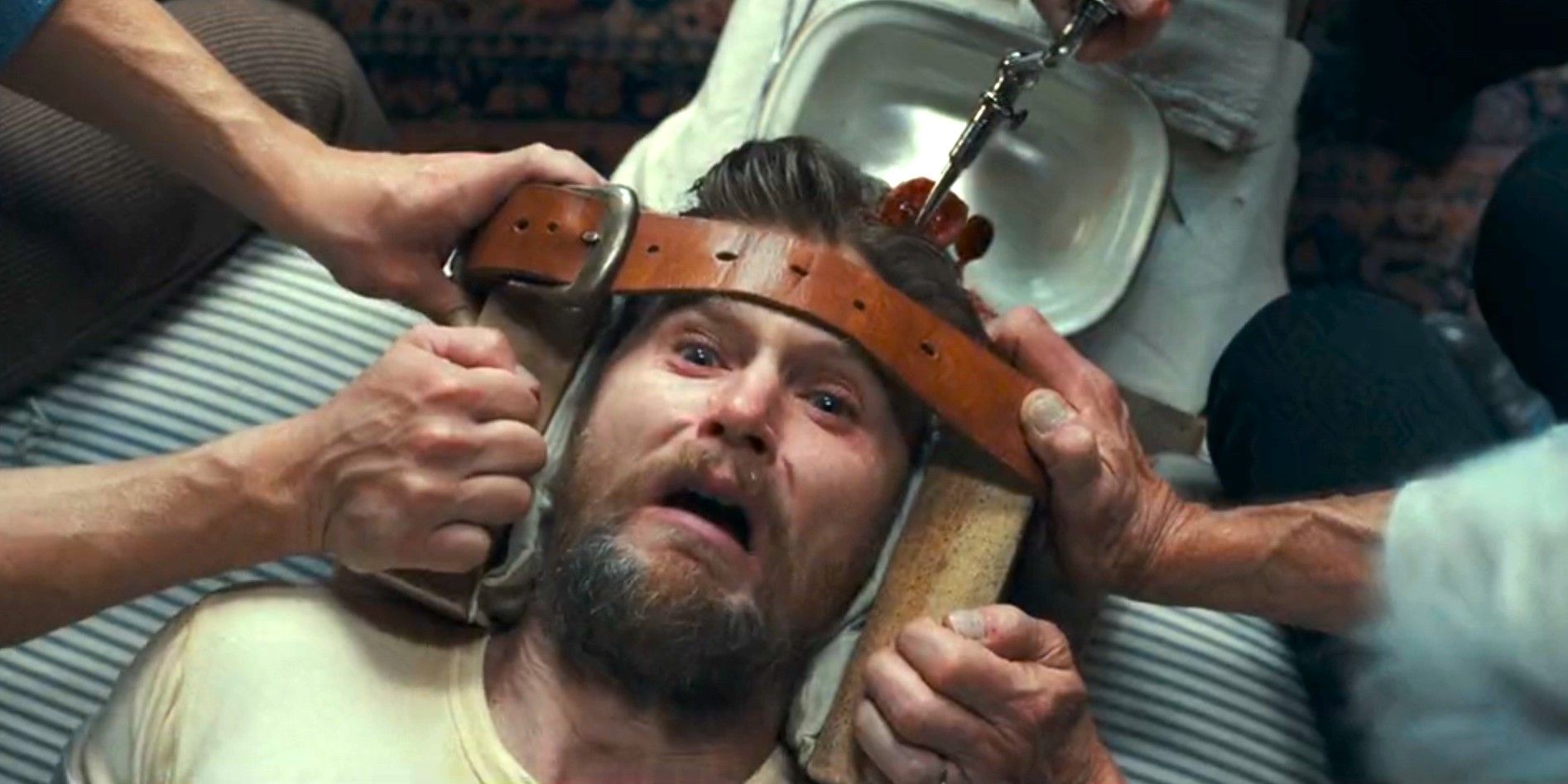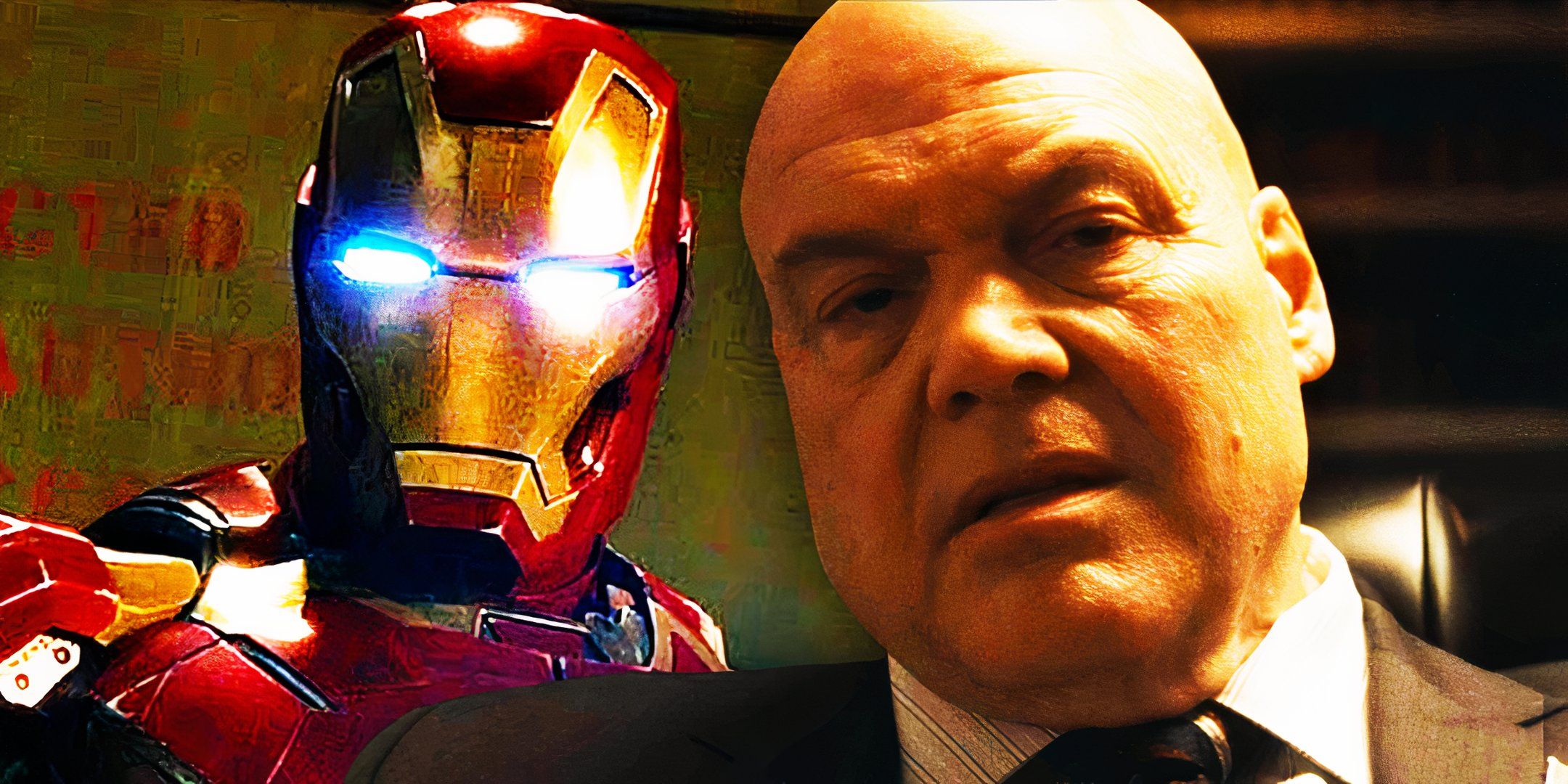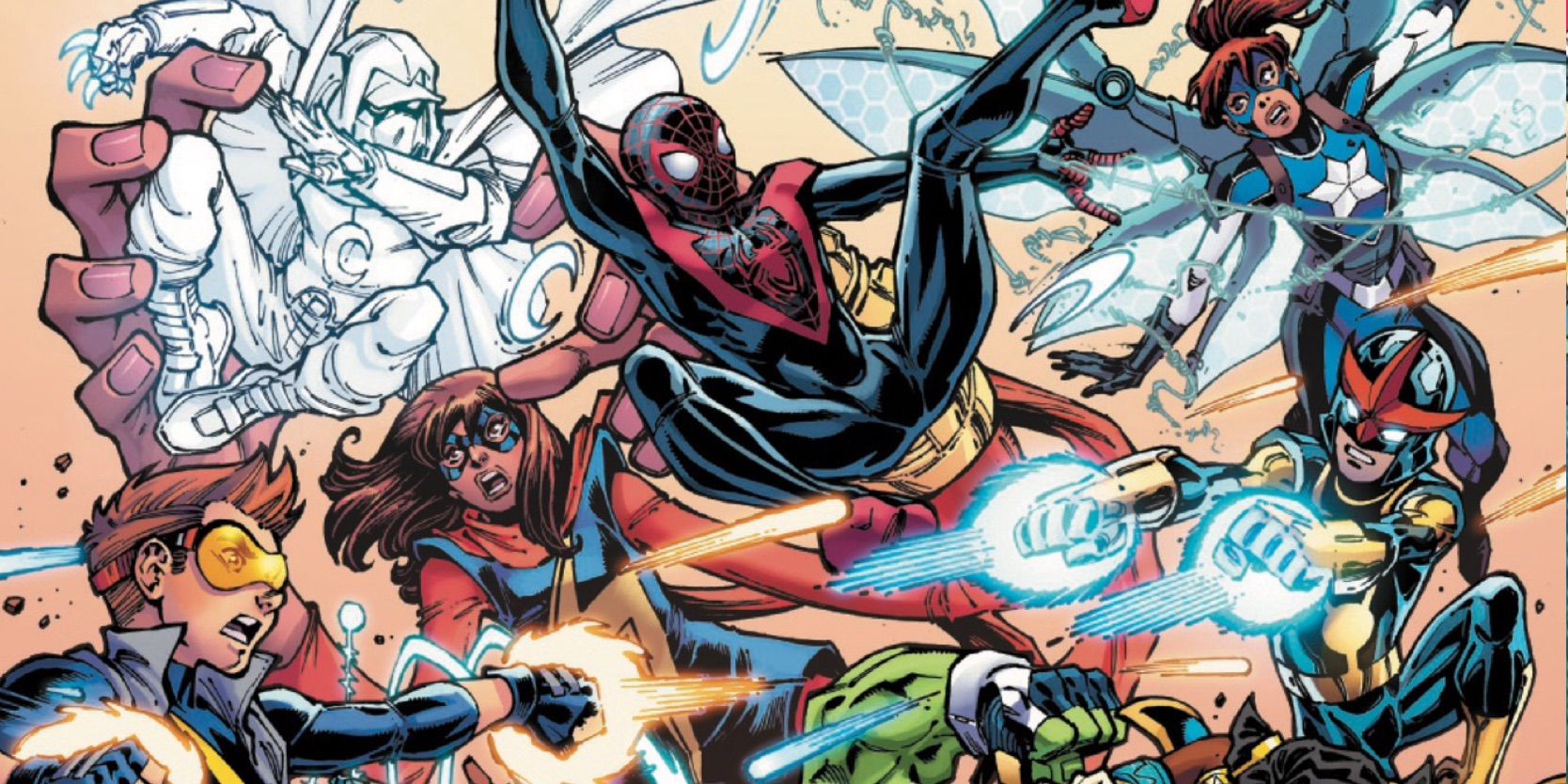Shogun Director Talks Episode 8's Major Death, Japanese Film Influences & Potential Season 2 Return
Warning: SPOILERS lie ahead for Shogun!
Summary Shogun episode 8 showcases Toranaga's surrender and emotional moments, like Hiromatsu's seppuku and Buntaro's tea ceremony.
Toranaga's hidden scheme to become shōgun is revealed post-finale, with Hiromatsu's death being part of his plan.
Director Emmanuel Osei-Kuffour Jr. brings authenticity to Shogun, drawing from his Japanese film experiences, enhancing emotional scenes.
In a show packed full of emotional twists and turns, Shogun episode 8 stands out as a highlight. Based on James Clavell's historical fiction novel of the same name, the FX and Hulu show centered on Kantō lord Yoshii Toranaga as he becomes targeted for death by the other powerful regents in 15th century Japan. While he secretly plots a way to survive this death sentence and retain his power, he also builds a tenuous partnership with John Blackthorne, an English maritime pilot who goes from a prisoner to one of Toranaga's right-hand men.
Shogun episode 8 was, in particular, one of the heavier episodes of the show as it picked up right after the death of Toranaga's son, Nagakado, after his failed attempt to assassinate Saeki. The Kantō lord indicates he will proceed with his surrender to Osaka, much to the chagrin of his allies, including Buntaro, who proposes to his wife Mariko that they commit suicide in protest, which she promptly refuses. This also results in the death of Toranaga's trusted general and confidant, Hiromatsu, who commits seppuku in defiance of his order.
Related 7 Biggest Clues To Shogun’s Major Toranaga Twist We Should’ve Have Picked Up Sooner Toranaga’s actions in Shōgun gain a new meaning on a rewatch following the major reveals from the finale, which confirmed he wanted to become shōgun.
Unbeknownst to all except Mariko, Hiromatsu's death was actually a plan by Toranaga to ensure that his enemies believed his defeat was real, still carefully plotting his success in outwitting his opponents and at-the-time mysterious grand scheme. Even in spite of seemingly using both Hiromatsu and Nagakado's death as part of his plans, Toranaga still seems to be rocked by each passing, with the episode closing on the lord promising that he will not waste their deaths and the time they bought for him.
Following the show's epic season 1 finale, Screen Rant interviewed director Emmanuel Osei-Koffour Jr. to discuss Shogun episode 8, his own past of living in Japan, the various Japanese film influences he brought to the show, and the deeper layers beneath Hiromatsu's seppuku scene and Buntaro and Mariko's tea ceremony.
Osei-Kuffour Jr. Had A Lot Of Japanese Experience That Made Him Perfect For Shogun
Prior to joining the FX/Hulu show, Osei-Kuffour Jr. had been steadily building a resume on the small screen with the Blumhouse and Prime Video thriller Black Box and directing an episode of Mike Flanagan's The Midnight Club. His biggest experience that ultimately made him the perfect choice to join Shogun was actually his film school years, which he spent in Japan, becoming immersed in the culture and cinema, much of which he brought into the production:
Emmanuel Osei-Kuffour Jr.: So actually, it's funny you mentioned Midnight Club. My assistant, director Dan Miller, was actually my assistant director on that show, as well. So, I did that about a year and a half before Shogun, and when I first met him, I told him about my time living in Japan, and how I lived there for six years, and how I speak Japanese at an advanced level, and how I was in love with Japanese cinema, and how everything I do is about belonging and identity. He was like, "You should really talk to the Shogun people, because I just got hired on this show that's this really authentic samurai series." I hadn't heard about it up until that point, so he introduced me to the showrunner, Justin Marks, and the producer, Ed McDonnell. And yeah, that's how it happened. It was the most enjoyable interview I've ever had on a show, because I was being myself, and I was talking about my love for Japanese cinema and my time there, and we were very simpatico in terms of sensibility and taste. It was a great interview. Obviously, we had a lot of resources on that show. You can see it on the screen, there's a lot of attention being paid to authenticity, and that was great. I think one of the challenges on the show was the fact that every cast member — I would say 90% of the cast spoke only Japanese. So, I felt like, because I spoke Japanese, I was able to communicate directly with the actors and the crew members that were Japanese, and develop a rapport that was unique to me and them. I remember having a lot of really great video village conversations with a lot of the cast members, and really being transported back to my time living in Japan. In many ways, working on this show felt like coming home, because I started my career there. The first short films I made in film school were in Japan, most of my films before I came back to the States were in the Japanese language, working on a Japanese set, understanding hierarchy, understanding the need to fit in, understanding how to read in between the lines, and becoming sensitive to what is not being said. When it comes to cast or comes to producers, I think all that stuff, just knowledge of the culture and its sensitivity to the culture, gave me a rapport that I think was really unique, and really special with all the cast members and all the Japanese crew members.
When it came to melding his own creative vision for the show with the visual language established by the previous seven episodes, Osei-Kuffour Jr. found he was given a lot of creative freedom, ultimately turning to a few iconic Japanese movies as his reference for episode 8:
Emmanuel Osei-Kuffour Jr.: Yeah, so just kind of give a bit of context, my episode comes right after the death of Toranaga's son, Nagakado, and so it's a really unexpected death that rocks Toranaga and every other single member of his clan. And one of the things Justin told me early on is that the audience needed to feel this collective sense of grief throughout the entire clan, and there was this weight that he wanted to feel throughout the entire episode, which is distinct in my episode compared to every episode before it. So, it was not only my job to land performances from these samurai that push them to more vulnerable and emotional places, but it was also my job to find the visual language that captured that gloom that set in over Edo, which is also a place that we hadn't seen before. So, one of the references that I had specifically was Mabaroshi. Maboroshi no Hikari. It's Hirokazu Kore-eda's first feature film. Hirokazu Kore-eda is known for shoplifters, and Nobody Knows, and Like Father, Like Son. Personally, he's a very huge influence on me as a director, so being able to use that film was special, and the reason I looked at that film, in particular, is because that film is all about grief. And that film uses darkness and composition to really capture the isolation and despair that you feel during grief, and in a very quiet, tense, very sensitive way. So, I showed a lot of our reference images to Justin, and he loved it, and he gave me and my DP, Marc Laliberté, permission to go to town with that. Some other references for my episode were Harakiri, for obvious reasons, but also for not obvious reasons. Harakiri is also very quiet, and the compositions are very intentional, and you feel every shift when camera angles change, when lenses change, when shot sizes get tighter, you really feel it. Because there's a sense of intentionality throughout that film. That's what I wanted to feel with this, as well, especially building up to that seppuku scene, which was the climax of my episode. The series as a whole, also really brought a lot of visual language from Silence. And I also looked at Justin Kurzel's Macbeth, as well, which also captured this isolation, and there's this loneliness that I think Toranaga specifically experiences in this episode. But those are kind of what my visual references were for the show, for this episode, specifically.
Hiromatsu's Seppuku Scene Held Many Deeper Layers For Toranaga
Image via Hulu/FX
One of the biggest surprises to come from Shogun episode 8 was undoubtedly Hiromastu's seppuku, given just how close friends he and Toranaga were in the lead up to this moment. When it came to filming this moment, Osei-Kuffour Jr. underwent extensive preparation to capture every emotion possible for the audience, namely the one of sadness he felt when he read the episode's script:
Emmanuel Osei-Kuffour Jr.: Yeah, so that was a special scene. It's one of those scenes where, when you first read the script, I remember crying, and really getting emotional at the end of it, because I didn't see what was happening when I first read it. I didn't expect that to happen when I first read the script. What I love to do whenever I take on any project is capture that feeling that I have as a reader, and make sure I preserve that feeling for viewers, so that was a highlight scene. But that's also a highlight scene for Justin, when I finally had my first few meetings with him, it was very important that that scene landed properly, everything built up to that. So I was like, visually, I kept the camera out of the way, I didn't want to draw attention to the camera. And a lot of the reason why that that scene works so powerfully, in my opinion, is because the writing is spectacular. Toranaga and Hiromatsu, we rehearsed the scene like two or three times before we actually did it on the day. There was a lot of reworking of dialogue, there was a lot of reworking of blocking on my end to just really isolate and create a moment where I could isolate Hiromatsu and Toranaga, so when I got in their eyeline, that's all you see is the two of them. So, that was an intentional choice to put them off to the side like that. But, Hiromatsu and Toranaga, Sanada-san and Nishioka-san, respectively, they put everything into that scene. They made sure that there was a truth and a vulnerability to it, and it was just my job on the day to remind them where they're at, and to push that honesty and vulnerability. And again, I think this episode — no pun intended — there were a lot of tea kettles simmering with every single character on the show, and it was my job to really get that steam to come out and to get those good performances, and get vulnerability and get honesty and get a rawness that we hadn't seen just yet, because every single character in this episode was shifting. So, that was kind of what I did, I just really didn't want the camera to be a distraction. So, again, I just went back to Harakiri, that was a huge reference for me. But another thing that I did, real quick, is rain. Earthquakes and weather become a character in the show early and later in the series, and I really felt like, for whatever reason, rain could create a sense of gloom and dread, and foreshadow what would happen in this room. So, adding that was very intentional, and also during the rehearsals, really giving permission to all the actors in the room, not just Hiromatsu and Toranaga, but every actor in that room to really let the silence be heavy. We would be patient with performances, I think that all led to the tension, the quiet tension, that we feel in this episode and that scene in particular.
While the visual effects of Hiromatsu's death required some effort, one of Osei-Kuffour Jr.'s biggest focuses was spotlighting the understanding between him and Toranaga in that moment, communicated solely through their eyes as Toranaga "Nevere intended" for his friend to commit seppuku:
Emmanuel Osei-Kuffour Jr.: Yeah, so Hiroyuki Sanada is an incredible actor. There's not much you need to tell him, in my opinion, his face is magic, subtle expressions give everything. So, for that scene in particular, this whole episode is a bit of House of Cards. The entire episode, I really wanted the audience asking the question, "Is this a ruse? Is he really giving up Hiromatsu? Is there some ulterior motive happening? Or is he really, truly giving up here?" That's what I wanted the audience asking in every single scene, so even though Toranaga isn't in a scene, you feel the weight of him and his absence. So, when we get to this moment, every single character in that room has a unique emotional journey in relation to Toranaga. It was really important for me to build to that moment with every single character in that room, so this eventual death meant something to every single person in that room. But regarding specifically to Toranaga, he never intended for Hiromatsu to sacrifice himself in that scene. I think there was an intention in the back of his mind that he would need somebody in his clan to commit seppuku to make it feel real to Osaka, and that he expected the generals to do that, in many ways. But I don't think he intended for his best friend to do that. So, when we go back to that moment, of quiet tension in that staredown, a part of it is him creating a performance for every samurai in that room, so that when Osaka hears the news, they believe it. But a part of it is doing something with his eyes, and talking in code to Hiromatsu. So, Hiromatsu eventually, during that staredown, understands what is needed, and picks up on what Toronaga is actually doing, which is why he decides to join in on this performance and commit seppuku himself. So, that's what was really happening in that long, drawn-out staredown, and it was subtle. Nobody else in the room felt it, but there was a quiet communication happening between the two of them.
Osei-Kuffour Jr. Packed A Lot Of Details In Buntaro & Mariko's Tea Ceremony
Another major moment in Shogun episode 8 came in the form of its mid-episode tea ceremony, in which Buntaro attempts to woo his wife, Mariko, and convince her to commit suicide in an effort to protest Toranaga's surrender. While already a sequence full of rich dialogue, Osei-Kuffour Jr. worked hard to capture the "emotional undercurrent" going on between Buntaro and Mariko, turning to focus on the various details in the set as a key means of highlighting the deeper themes:
Emmanuel Osei-Kuffour Jr.: Yeah, that was also a highlight for me, and it was also one of those things that, early on, you want to get right. I'm not a tea ceremony expert, but I was lucky to have stellar producers. Obviously, Justin Marks, but Justin Marks wanted it to feel authentic, so this whole series is really him pushing for authenticity and relying on historians and Japanese consultants and experts to really create a world that we hadn't seen before, that felt really specific and authentic to the experience of living in Japan during the Sengoku Era. But, for me, it's not just a tea ceremony, and I think everybody would agree that it needed to be about something more. We needed to feel something in this thing, so one of my challenges early on was to figure out how to create an emotional undercurrent in this tea ceremony, while also being authentic to something that most people that have visited Japan know about. The tea ceremony is a very widely respected and known process, so what I did is I really wanted to make the scene, the making of the tea, specifically about Buntaro, and a thoughtfulness and a sacrificial nature that we just don't see from him. So, it was really him taking one last chance at wooing his wife, so when Mariko first comes into the room, she has a reaction to everything she's seeing, she has a reaction to the wall scrolls, she has a reaction to the flower. She has a reaction to every single tool that he's using in the tea ceremony, everything that was chosen by Buntaro was meant to communicate that, "I'm listening, and I hear you." There's a lot of thoughtfulness on his part, and part of the reason why I shot so many tight shots, so many detailed shots, was to put the audience in Mariko's point of view, so we feel the detail, and we get a clear sense of how much effort Buntaro is putting into this one cup of tea for his wife.
Osei-Kuffour Jr. Hasn't Heard Talks Of Shogun Season 2 (But Is Ready To Return)
Though initially planned as a miniseries adapting Clavell's book, Shogun season 2 looks to be in the early stages of development, with Hiroyuki Sanada having signed a deal to reprise his role of Toranaga in another season. With these talks in such an early phase, Osei-Kuffour Jr. remains unclear as to whether he will return, though is incredibly hopeful and grateful for his experience on season 1:
Emmanuel Osei-Kuffour Jr.: I would love to be back on board, this is my favorite show experience ever. Like I said, I have a very strong relationship with the cast members, I love the themes of this show, it's very truthful to my experience living there. I felt a lot of my life experience living in Japan for six years kind of came full circle on the show, really reading in between the lines, learning the importance of fitting in and just understanding about culture was really very useful on a show like this. And it's on display in every episode in the series. I don't know anything about season 2, I know as much as you do, but if there is a season 2, I would love to be a part of it. I just really want to say thank you to Justin Marks and Ed McDonnell for giving me a shot on the show. It has meant a lot to me. Hiroyuki Sanada, as well, was a very active producer on the show, so just getting a chance to work with somebody I've idolized like him, and Tadanobu Asano, was a dream. I really hope this opens up the door to more shows about Japanese culture for a Western audience, and that they really lean into the authenticity of that culture, because there's a lot of untapped potential in Japan. I hope that people continue to get that experience.
Osei-Kuffour Jr.'s Lips Are Sealed On Welcome To Derry (Though Promises Fans Will Be Happy)
Following Shogun, Osei-Kuffour Jr. is returning to the world of horror television with the IT prequel series, Welcome to Derry, at Max, which is slated for an unspecified 2025 release date. Though keeping his lips sealed on what audiences can expect from the show, the director does tease that fans of the Andy Muschietti movies will be "very excited" by what's to come, and even favorably comparing his experience on it to his work on The Midnight Club:
Emmanuel Osei-Kuffour Jr.: Ah, I can't really talk about that. But I will say it's a TV show. So, you learn more about the characters, it's very, very character-driven. I've enjoyed preparing for that show, and I think audiences will be as scared as they are in the original movies, and Andy Muschietti's handprints are all over this series. So, I think people will be very excited for the series. [Mike Flanagan and Andy Muschietti] are quite similar. Both Andy and Mike are horror aficionados, they're also very much all about emotion, and character. It's really hard to comment on it without talking about the show, so I wish I could talk more about it. When the episode wraps, I'm sure I'll have some time to reflect. But yeah, I love the show. My experience on this series has been just as deep and fulfilling, and I've been able to capture emotional nuance in genre on that show, as well. So, for me, every show I work on moving forward, I have to find a way to find nuance and emotion, regardless of whether it's an adventure series like Shogun, a horror series like Welcome to Derry or The Midnight Club, or even The Recruit. Just getting the opportunity to continue to tell very nuanced, emotionally charged, character-driven genre shows is something that I've been very, very lucky to do, and I hope I can continue doing.
About Shogun
Close
FX’s Shōgun, an original adaptation of James Clavell’s bestselling novel, is set in Japan in the year 1600 at the dawn of a century-defining civil war. Producer Hiroyuki Sanada stars as “Lord Yoshii Toranaga” who is fighting for his life as his enemies on the Council of Regents unite against him.
Your browser does not support the video tag.
Check out our previous Shogun interviews below:
The entirety of Shogun season 1 is available to stream on Hulu.
Source: Screen Rant Plus











COMMENTS